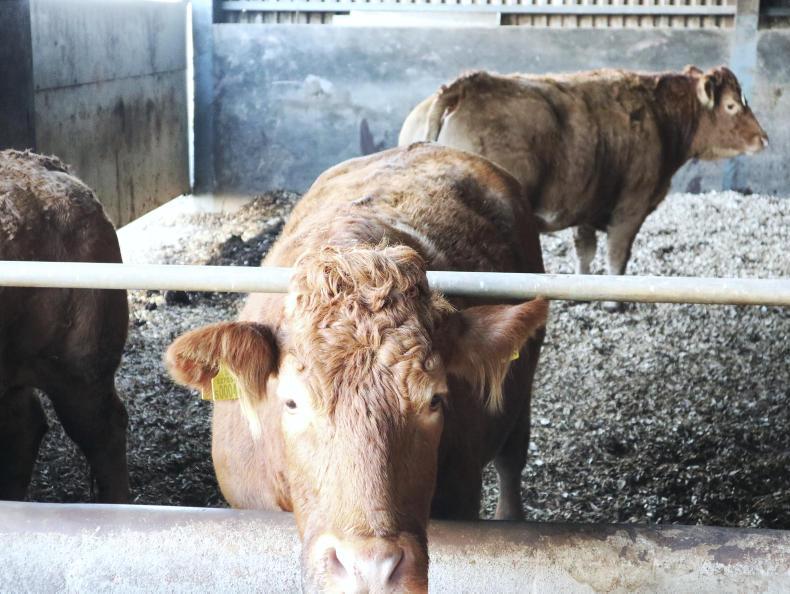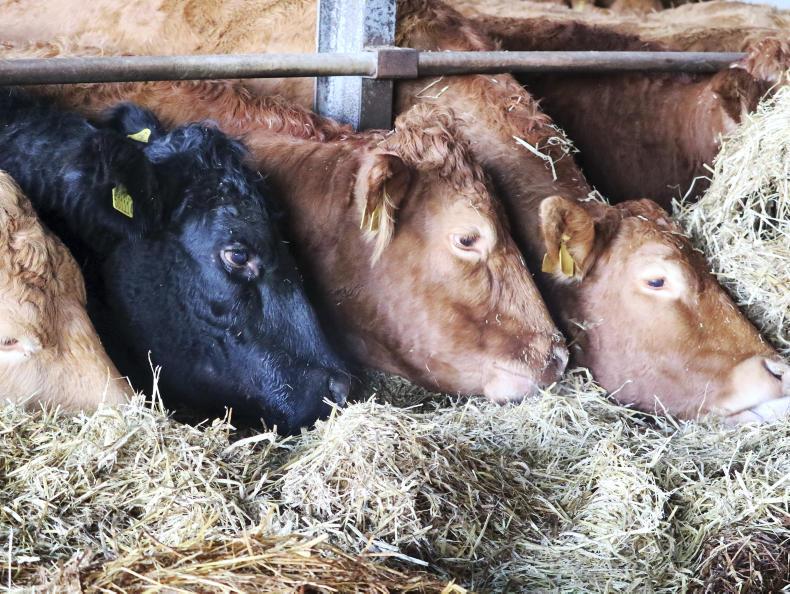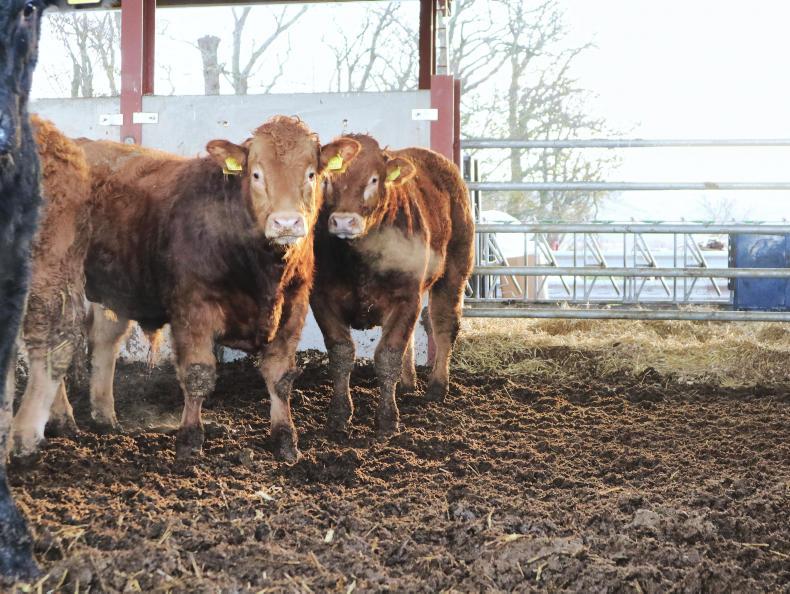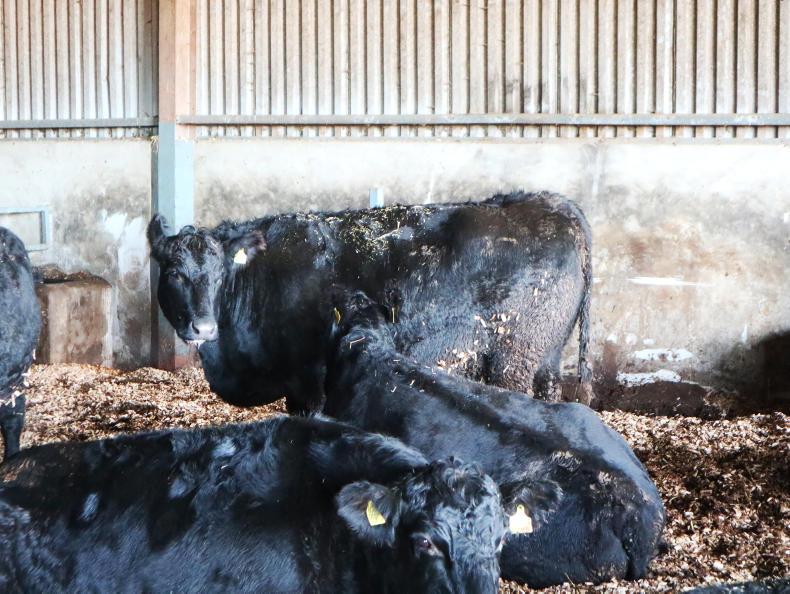The winter brings with it more structured days as the tasks are quite repetitive. It also provides time to reflect and analyse the year that has passed for a moment, before gearing up for the seasons to come.
Last week I sat down with Declan and Robert to do the yearly review of the business – it’s hard to believe it’s a full year since the initial benchmarking was done for the programme. As we were a newly established business, our benchmark figures didn’t really mean all that much to us. There were a lot of one-off purchases and payments that won’t be there going forward. I’m looking forward to seeing this year’s figures as the business settles into its selected system of production.
Like all new businesses, it’s going to take a few years to see a return on our investment but we are confident we are moving in the right direction – hopefully the review figures will confirm it!
All stock have been housed since 18 October. Ground was so wet at that stage we decided to bring everything in rather than make a mess. As a result there is a nice cover of grass on a lot of the paddocks as we had started to close up ground on the farm from mid-September in order to have grass in springtime. However, if conditions hadn’t been so poor the plan was to keep some heifers out for longer and graze off some more paddocks.
This grass will be useful in spring though and as soon as ground conditions allow we will be letting out the lighter stock such as the yearling heifers to graze it. We managed to get yearling heifers out six weeks earlier this spring than in previous years so we are hoping for roughly the same turnout date next year.

When the heifers went out this year they didn’t perform very well for the first month or six weeks. We are putting this down to how fast they had grown during the winter period. At turnout in late March, they were just coming up on a year old on average and weighed somewhere around the 460kg mark. This winter we will control the heifers’ growth a bit more, although with the good silage quality they will still be touching the kilo/day. In this way they should kick on when they get to grass having saved money on winter feed. They will still be well on target for breeding come early June.
Winter diets
The cows have come into the sheds in super condition. On average I would say they are a body condition score (BCS) of 3.5. This is going to be a real cost saver over the winter as we can utilise some of this condition in the run-up to calving to have them at the optimum BCS of 2.5-2.75.
They are on an ammonia-treated straw diet. It’s the first time we have used it here and so far, so good. The cows are really quite content on it. Last week we even introduced clean straw bales as they have been quite loose in the dung. The clean straw has slowed up the passage rate and seems to have done the trick. They are getting some pot-ale syrup through the bales to balance energy intake. We will introduce some silage six weeks out from calving.

The in-calf heifers have also come in in great condition. We have had to tweak their diets already as they are just a little too conditioned for calving. It’s not that they have had any preferential treatment all year – they have just been on grass since turnout in late march. They are just easily fleshed type heifers. We need to be careful with these though as they are still growing themselves as well as the developing foetus. We have increased the clean straw by just 0.5kg/head/day and slightly reduced silage in the diet feeder to see how they react to it. Any condition loss for them has to be slow and controlled to avoid any problems at calving time.
Woodchip
All the cattle on the farm are bedded on woodchip. We tried some of it last year and it worked well so this year everything is on it. We put in a good 10-12in prior to housing and we added to this for the first time last week for most of the stock. They seem to be quite content on it and they are perfectly clean. Again the plan is to switch over to straw for spring-calving cows just prior to the start of calving. In saying that, I don’t think there would be any issues calving down onto chip.

A farmer down south who has been bedding on chip the past few years has advised me not to go in and stir up the chip after a few weeks to try and get longer out of it. He maintains that if you leave it alone the moisture will naturally soak away and while the top may look black and almost peat-like, the cattle will still be clean and comfortable on it. We will have to wait and see.
We dry our own chip on farm and cost it into the business at £80/t. With the length we are getting out of each bedding I would say it’s at least comparable in price with straw and cheaper in a year with straw prices like this.
Scanning results
 After a difficult end to the breeding season that saw us lose two breeding bulls, we were quite nervous the morning of the scanning. As we are trying to increase numbers on the farm and at the same time keep the calving period under control, any loss in cow numbers would be a problem. I knew there was going to be some empty as I had seen some heat activity since the bulls had come out. The result was that out of 56 scanned 44 were in-calf. While it is not the result we were after, it could have been a lot worse. Since this, six empty cows have been culled coming into about £1,300/head. This money will be used to re-invest in breeding stock.
After a difficult end to the breeding season that saw us lose two breeding bulls, we were quite nervous the morning of the scanning. As we are trying to increase numbers on the farm and at the same time keep the calving period under control, any loss in cow numbers would be a problem. I knew there was going to be some empty as I had seen some heat activity since the bulls had come out. The result was that out of 56 scanned 44 were in-calf. While it is not the result we were after, it could have been a lot worse. Since this, six empty cows have been culled coming into about £1,300/head. This money will be used to re-invest in breeding stock.
Young stock
The later summer (May/June) calves will be weaned in a few weeks’ time. They have really kicked on in the last few weeks since settling indoors. The calves have a creep area away from the cows and have access to a creep feeder.
As we are trying to build numbers all heifers suitable for breeding will be retained. The January/February born bulls they are not suitable for breeding will be slaughtered as young bulls at 12-13 months.
Read more
All reports from the Farm Profit Programme
The winter brings with it more structured days as the tasks are quite repetitive. It also provides time to reflect and analyse the year that has passed for a moment, before gearing up for the seasons to come.
Last week I sat down with Declan and Robert to do the yearly review of the business – it’s hard to believe it’s a full year since the initial benchmarking was done for the programme. As we were a newly established business, our benchmark figures didn’t really mean all that much to us. There were a lot of one-off purchases and payments that won’t be there going forward. I’m looking forward to seeing this year’s figures as the business settles into its selected system of production.
Like all new businesses, it’s going to take a few years to see a return on our investment but we are confident we are moving in the right direction – hopefully the review figures will confirm it!
All stock have been housed since 18 October. Ground was so wet at that stage we decided to bring everything in rather than make a mess. As a result there is a nice cover of grass on a lot of the paddocks as we had started to close up ground on the farm from mid-September in order to have grass in springtime. However, if conditions hadn’t been so poor the plan was to keep some heifers out for longer and graze off some more paddocks.
This grass will be useful in spring though and as soon as ground conditions allow we will be letting out the lighter stock such as the yearling heifers to graze it. We managed to get yearling heifers out six weeks earlier this spring than in previous years so we are hoping for roughly the same turnout date next year.

When the heifers went out this year they didn’t perform very well for the first month or six weeks. We are putting this down to how fast they had grown during the winter period. At turnout in late March, they were just coming up on a year old on average and weighed somewhere around the 460kg mark. This winter we will control the heifers’ growth a bit more, although with the good silage quality they will still be touching the kilo/day. In this way they should kick on when they get to grass having saved money on winter feed. They will still be well on target for breeding come early June.
Winter diets
The cows have come into the sheds in super condition. On average I would say they are a body condition score (BCS) of 3.5. This is going to be a real cost saver over the winter as we can utilise some of this condition in the run-up to calving to have them at the optimum BCS of 2.5-2.75.
They are on an ammonia-treated straw diet. It’s the first time we have used it here and so far, so good. The cows are really quite content on it. Last week we even introduced clean straw bales as they have been quite loose in the dung. The clean straw has slowed up the passage rate and seems to have done the trick. They are getting some pot-ale syrup through the bales to balance energy intake. We will introduce some silage six weeks out from calving.

The in-calf heifers have also come in in great condition. We have had to tweak their diets already as they are just a little too conditioned for calving. It’s not that they have had any preferential treatment all year – they have just been on grass since turnout in late march. They are just easily fleshed type heifers. We need to be careful with these though as they are still growing themselves as well as the developing foetus. We have increased the clean straw by just 0.5kg/head/day and slightly reduced silage in the diet feeder to see how they react to it. Any condition loss for them has to be slow and controlled to avoid any problems at calving time.
Woodchip
All the cattle on the farm are bedded on woodchip. We tried some of it last year and it worked well so this year everything is on it. We put in a good 10-12in prior to housing and we added to this for the first time last week for most of the stock. They seem to be quite content on it and they are perfectly clean. Again the plan is to switch over to straw for spring-calving cows just prior to the start of calving. In saying that, I don’t think there would be any issues calving down onto chip.

A farmer down south who has been bedding on chip the past few years has advised me not to go in and stir up the chip after a few weeks to try and get longer out of it. He maintains that if you leave it alone the moisture will naturally soak away and while the top may look black and almost peat-like, the cattle will still be clean and comfortable on it. We will have to wait and see.
We dry our own chip on farm and cost it into the business at £80/t. With the length we are getting out of each bedding I would say it’s at least comparable in price with straw and cheaper in a year with straw prices like this.
Scanning results
 After a difficult end to the breeding season that saw us lose two breeding bulls, we were quite nervous the morning of the scanning. As we are trying to increase numbers on the farm and at the same time keep the calving period under control, any loss in cow numbers would be a problem. I knew there was going to be some empty as I had seen some heat activity since the bulls had come out. The result was that out of 56 scanned 44 were in-calf. While it is not the result we were after, it could have been a lot worse. Since this, six empty cows have been culled coming into about £1,300/head. This money will be used to re-invest in breeding stock.
After a difficult end to the breeding season that saw us lose two breeding bulls, we were quite nervous the morning of the scanning. As we are trying to increase numbers on the farm and at the same time keep the calving period under control, any loss in cow numbers would be a problem. I knew there was going to be some empty as I had seen some heat activity since the bulls had come out. The result was that out of 56 scanned 44 were in-calf. While it is not the result we were after, it could have been a lot worse. Since this, six empty cows have been culled coming into about £1,300/head. This money will be used to re-invest in breeding stock.
Young stock
The later summer (May/June) calves will be weaned in a few weeks’ time. They have really kicked on in the last few weeks since settling indoors. The calves have a creep area away from the cows and have access to a creep feeder.
As we are trying to build numbers all heifers suitable for breeding will be retained. The January/February born bulls they are not suitable for breeding will be slaughtered as young bulls at 12-13 months.
Read more
All reports from the Farm Profit Programme



 After a difficult end to the breeding season that saw us lose two breeding bulls, we were quite nervous the morning of the scanning. As we are trying to increase numbers on the farm and at the same time keep the calving period under control, any loss in cow numbers would be a problem. I knew there was going to be some empty as I had seen some heat activity since the bulls had come out. The result was that out of 56 scanned 44 were in-calf. While it is not the result we were after, it could have been a lot worse. Since this, six empty cows have been culled coming into about £1,300/head. This money will be used to re-invest in breeding stock.
After a difficult end to the breeding season that saw us lose two breeding bulls, we were quite nervous the morning of the scanning. As we are trying to increase numbers on the farm and at the same time keep the calving period under control, any loss in cow numbers would be a problem. I knew there was going to be some empty as I had seen some heat activity since the bulls had come out. The result was that out of 56 scanned 44 were in-calf. While it is not the result we were after, it could have been a lot worse. Since this, six empty cows have been culled coming into about £1,300/head. This money will be used to re-invest in breeding stock. 





 This is a subscriber-only article
This is a subscriber-only article
















SHARING OPTIONS: